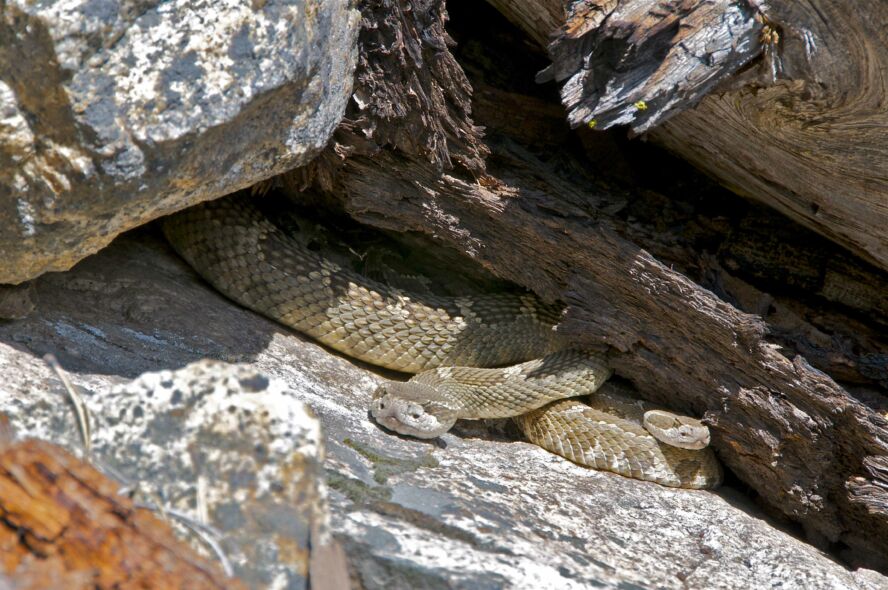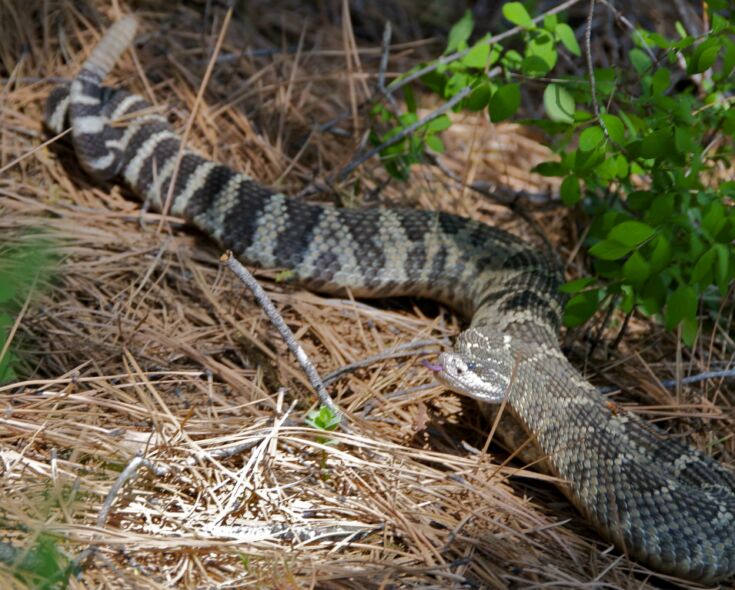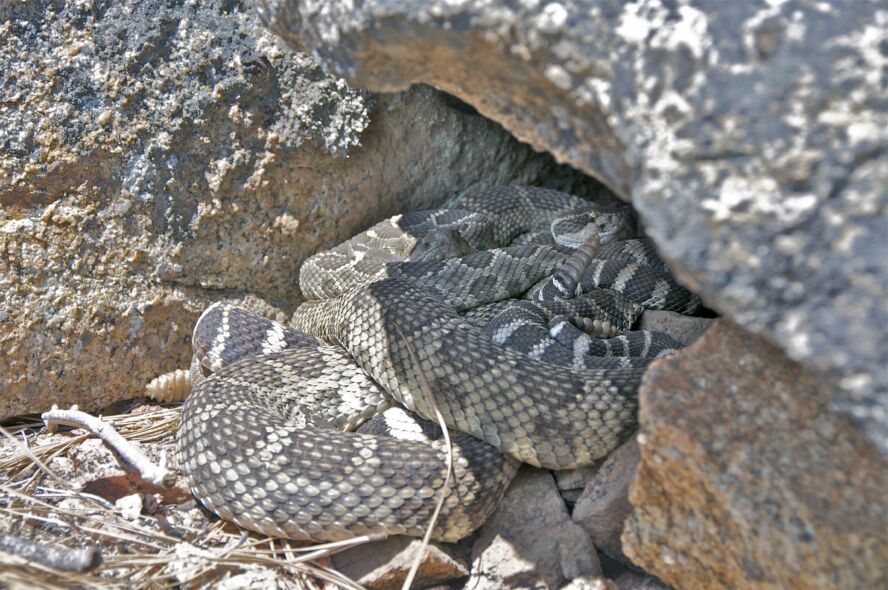Our National Forests provide some of the most intact ecosystems of the country, but measuring the health of these ecosystems can be a challenge. To gauge the overall health of an ecosystem, managers often target one particular species, and native snakes are one species managers rely on. For much of the country that includes one or more of the 32 species of rattlesnakes found in the United States.
In late April I was able to accompany a Forest Service biologist on two field trips in the Okanogan-Wenatchee National Forest in Washington to map denning sites of the northernmost rattlesnake in the U.S.: the western rattlesnake, Crotalus oreganus.






